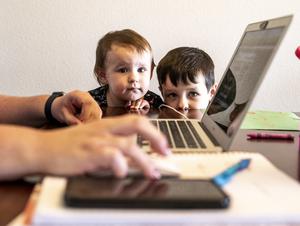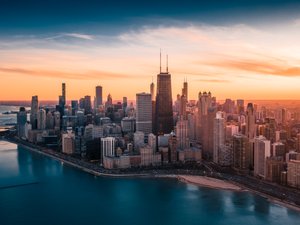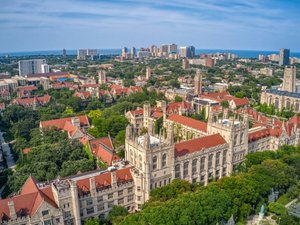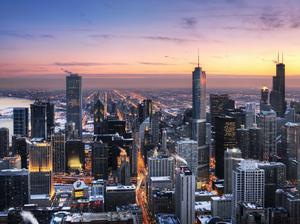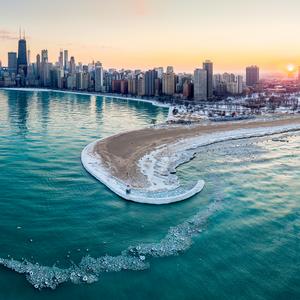Every city wants to be a “Smart City,” an urban environment that uses software and the Internet of Things to manage its assets, improving the efficiency of its services and the lives of its inhabitants through technology.
So, um, where are they? Yes, some cities are further along than others - New York deploys smart traffic management systems; Nice, France uses nearly 3,000 sensors to process environmental data; and here in Chicago the city makes all of its information accessible via the massive city data portal - and there are Smart City initiatives and efforts in nearly every major city in the world, as well as several global Smart City forums and councils.
But even the “Smartest” of the Smart Cities - London, Singapore, and Barcelona to name a few - admit that they are just in the early stages of this transformation. Really, every “Smart City” in the world is just entering grade school.
Why is this? Most cities are built on decades - and sometimes centuries - of infrastructure and systems, with thousands of buildings, that aren’t compatible with smart grid technologies. And to get them compatible, it takes a lot of time and a lot of money. Unfortunately, there’s no magical IoT device that can be plugged into a central grid that immediately turns a city into a connected, thinking organism. The problem is that most cities have just been too dumb for too long in order to become smart overnight.
It's really, really hard to do Smart City initiatives in an analogue environment
And that problem is at the heart of the Imagine Project, an ambitious new proposal to transform 114 undeveloped acres in Bronzeville into a living lab, its very own Smart City within the city of Chicago.
The Area:
Nearly 10 years ago, the city of Chicago bought over 100 acres in the Bronzeville neighborhood for $89 million, with the goal of converting the former site of the Michael Reese Hospital into the Olympic Village for the 2016 Summer Games. When that bid failed, the city was left with an attractive, underdeveloped plot of land along the lakefront and has been looking for a suitor ever since, according to DNA Info. Reportedly, the area has been previously looked at for the Obama Library, a tech park, and a casino, with every plan eventually falling flat.
Last year, the city decided to source external ideas for the area and announced that it will accept for proposals for the land, with the winning proposal earning the rights to make an official offer. The city then received several proposals before the February deadline, with one of them being The Imagine Project
The Proposal:
On the surface, the Imagine Project, which is led by developer Paul McDermott and Bo Rodda, a former energy efficiency specialist at Argonne, looks like a lot other ambitious, flashy urban proposals. There are luxury condos, sports and entertainment venues, a new hotel, affordable apartments, and much more.
“Our vision is a vibrant, sustainable, diverse, pedestrian and family-friendly, community honoring the history of Bronzeville," said McDermott in a statement. “We see it a first-of- its-kind, mixed-use, urban revitalization project to not only transform the South Side, but also elevate Chicago’s global stature and enhance quality-of- life for local residents.”
But beyond the impressive aesthetics, the real promise of Imagine Project is that it aims to be the first “Smart City” in the U.S to feature "all of the latest cutting-edge urban technologies – smart grid, district heating & cooling, Array of Things, high speed Wi-Fi, robotics, auto-transportation and much more," says McDermott.
The Imagine campus will also provide affordable office, lab and light manufacturing space and support services to "2nd-stage companies," as well accelerator programs and mentorship for entrepreneurs. And according to McDermott, they're already having discussions with private organizations, corporations and research institutions to establish a collaborative research center for the campus that will be focused on testing and rolling-out innovative urban technologies.
Whereas other cities and neighborhoods have to integrate this next-gen technology into antiquated infrastructure, the Imagine Project intends to be one of the first communities and neighborhoods that's built "smart" from the ground up.
"If we can use best-case systems in the design of this city, like having easier access to fiber corridors, and sensors and beacons in the sidewalks it'll be a game-changer," Rodda told Chicago Inno. "Think about the Array of Things project. It's impressive, but it took nearly two years to roll out. It's really, really hard to do Smart City initiatives in an analogue environment. With the Imagine Project's proposed infrastructure the city will be able to test things like this much faster. We're going to take some of the energy that's already happening and give it a real place to grow."
And with that, The Imagine Project hopes to be the environment that enables the city to truly test, scale, and implement all Smart City efforts, enabling Chicago to not just participate in this pursuit, but to become a Smart City.
"Because the 112-acre development is completely new from the ground up, it becomes the perfect home for research, testing and applications, and is a center for new and existing urban technologies," says McDermott.
The Details:
According to the proposal, The Imagine Project includes 5 million square feet of office, lab and conference space, 1.4 million square feet of new hotels and 2 foreign university extensions as well as new student dorms and collaborative academic space for local universities. It aims to be a "City within a City," with everything a resident, worker, or visitor would need.
The residential component calls for 4,000 residential units – from luxury condos, affordable housing, and micro apartments to single-family homes spread among commercial and recreational development that "will bring 400,000 square feet of retail space, 200,000 square feet of restaurants, bars and nightclubs and 12 acres of recreation and sports facilities and programs and 30 acres of added green space."
"A lot of proposed 'innovation districts' tend to focus on one thing," explains Rodda. "This project has areas for tech, sports, art, music and more. It's collaborative innovation across multiple discipline, which makes it unique. It's a place for all ideas to come together."
Right now, the city is looking at multiple proposals for this undeveloped area and hopes to select a winning bid in mid April.
The Imagine Project, according to McDermott, will stimulate 4,600 construction jobs, create 27,000 jobs onsite once completed and another 35,000 jobs through indirect economic impact.
Let's take a look at the proposed Imagine Project...
A Map of the Image Project
An Overview of the Imagine Project Core Elements
Two Views from the Lake [Artist Rendition]
A View of the Image Project from the South
A View of the Image Project Development from Overhead [Artist Rendition]
A 3D Composite of the Image Project
An Interior Shot of the Performing Arts Venue [Artist Rendition]
Map of Where the Imagine Project Will Be
A Final Artist Rendition of the Imagine Project
